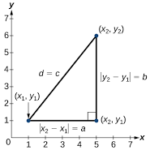Low blood pressure may appear desirable, and it may cause no issues for some people. However, hypotension (abnormally low blood pressure) can result in dizziness and fainting for many people. Hypotension can be fatal in extreme situations.
A blood pressure value of fewer than 90 millimeters of mercury (mm Hg) at the top (systolic) or 60 mm Hg at the bottom (diastolic) is regarded to have low blood pressure. Hypotension can be caused by factors ranging from dehydration to significant medical conditions.
Also check: volokit nfl
It is critical to determine the cause of your hypotension to treat it. Whether you look for low BP symptoms in Hindi or English, the danger remains the same if left untreated.
Hypotension can be transient or chronic (long-lasting). It’s classified into the following categories:
- Orthostatic hypotension: Individuals with orthostatic hypotension experience dizziness or fainting when standing up or shifting positions abruptly.
- Postprandial hypotension: This condition usually occurs when a person’s blood pressure decreases quickly following a meal.
- Hypotension mediated by the nervous system: Individuals with this disease feel dizzy, faint, and nauseous after working out or standing for an extended period.
- Shock-induced severe hypotension: Shock is by far the most severe kind of hypotension. When an individual is in shock, their blood pressure drops dangerously low, and their brain and organs run out of blood.
Low blood pressure symptoms might develop quickly or gradually worsen over time. They include the following:
- Lightheadedness, dizziness, and fainting
- Nausea
- Blurry vision
- Cold and perspiring skin
- Fatigue
- Breathing rapidly and shallowly
Also check watchserieshd
What can one do to alleviate the symptoms of hypotension?
You may be able to alleviate some of your symptoms based on the type of hypotension you have by:
- Consuming a low-carbohydrate diet with many little meals.
- Consuming more water and abstaining from alcohol.
- Slowly rising from a seated or lying position.
- Before changing positions, focus on your breathing a few times.
- Compression stockings are worn.
How is hypotension diagnosed?
Your doctor will inquire about your ailments and take your pulse rate by wrapping an upper arm in a blood pressure cuff. Your arm will be cuffed, and the sensor will record your diastolic and systolic blood pressures. Hypotension is defined as 90/60 mm Hg (or below).
Because hypotension may be a symptom of an underlying illness, your doctor will attempt to discover what caused it to decrease. Your physician may also do an echocardiography, ECG, or stress test based on your medical past medical history. Additionally, your doctor may do blood tests to screen for the following:
- Diabetes
- Anemia
- Deficiencies in vitamins
- Thyroid disorders
- Imbalances in the hormones
Low blood pressure therapies vary according to the etiology of the problem. Your doctor will collaborate with you to determine the source of your hypotension. In extreme situations of low blood pressure, your doctor may administer intravenous fluids to help you regain normal blood pressure.
Your physician may prescribe lifestyle changes, dietary modifications, and medication depending on your age and the kind of hypotension.
While hypotension is not generally a significant medical condition, it can result in injuries from fainting and falling. If untreated hypotension is allowed to persist, the brain, heart, and other organs will lack sufficient blood and cannot function correctly. Severe hypotension can result in deadly shock.
If you exhibit any of the signs of hypotension, you should consult a physician to take your blood pressure. While you may look up low BP symptoms in Hindi or English, you must consult your doctor before coming to conclusions.
For more information must visit Vistmagazine



